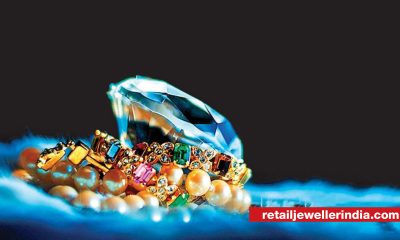RJ Market Watch
An Indian museum might soon get the world’s largest emerald

The stone, Inkalamu or ‘the lion’ in Zambia’s Bema language weighs 1.1 kg
“Everyone is talking about Choksi, Modi, and so on, but no one remembers that 4.5 million Indians are employed in the gem and jewellery industry,” says Rishabh Tongya, the young creative director of luxury jewellery brand Diacolor.
He plans to change this by offering the Inkalamu — a 5,655 carat or 1.1 kg emerald — to an Indian museum. Inkalamu or ‘the lion’ in Zambia’s Bema language, is possibly one of the largest gemstones ever found, and while Tongya won’t reveal the exact price offered for it at the auction in Singapore last September, experts peg the cost at around $50 million, making it one of the most expensive gemstones in the world.
In 2017, Diacolor bought an even bigger emerald, called Insofu or ‘baby elephant’, that weighed 6,100 carats. Both stones were found in Zambia’s Kagem mines, albeit nine years apart, by Gemfields, a U.K.-based mining, processing and marketing company.
But are these really among the largest uncut emeralds the world has seen? Tongya and Gopal Kumar, Director of Gemfields India, refuse to confirm this, choosing to talk instead about the clarity and quality of the stones.
The Kagem mines are relatively young, but emeralds go back to the age of Cleopatra of Egypt. She was known to love emeralds and the Cleopatra emerald mines, dating back to 2000-1200 BC, were some of the earliest known mines. The emeralds from these mines had healing and spiritual properties ascribed to them, including the ability to prevent epileptic seizures, cure dysentery, drive away evil spirits, and preserve chastity!
In fact, unlike rubies, diamonds and sapphires, emeralds are fairly uncommon. “The rich green colour is created by small amounts of chromium or vanadium embedded within the crystalline lattice of the stones, and chromium is fairly rare,” explains gemmologist Amit Kapoor. Small quantities used to be found in Rajasthan, but Kapoor says they’re now mined out.
Rarest and finest
The Panjshir mines in Afghanistan once had the rarest and finest emerald stones. And in Russia, an emerald weighing more than 1.5 kg was found in the Malyshevsky field last year.
But the world’s finest emeralds originate in Colombia, specifically the Muzo mine, and it is from here that their association with cruelty begins, as well as their link to the greatest gemstone lovers in history — the Mughals.
The Incas had always used emeralds, but when the Spanish reached Peru and Mexico in the 16th century and saw the brilliant green stones, less than 10 years later they had started developing and exploiting the mines in incredibly cruel conditions.
And it was from the Spaniards that the Portuguese bought the exquisite Colombian emeralds that they presented to the Mughals in return for trading rights.
The most famous emerald in the world today is the Patricia Emerald from Colombia’s Chivor mines. This 632-carat rare bi-hexagonal uncut stone resides in the American Museum of Natural History in New York, and has the silhouette of what looks like a gun embedded in it, a subtle reminder of the link between gems and drug wars in Colombia.
There’s also a strong connection between emeralds and India. Maharaja Sawai Jai Singh II of Jaipur invited craftsmen to the city in 1728 to help develop it as a trading centre. Today, most of the world’s coloured gemstone cutting and polishing happens in Jaipur. Overall, around nine of every 10 rough emeralds from Zambia and Brazil are cut and polished in India, and it’s this statistic that Zambia would like to change. The Zambian High Commissioner, Judith K.K. Kan’goma Kapijimpanga, says she would like Zambia to become a polishing centre instead of just a raw material provider. Gems and jewellery is the second largest foreign exchange earner for India, while Zambia says it loses billions to foreign miners.
Interestingly, Zambia has a policy India could learn from. Mining companies like Gemfields have to contribute a percentage of their auction proceeds to conservation efforts. In the case of the Inkalamu emerald, the partner was the Zambian Carnivore Programme, which looks at conserving large carnivores and their ecosystems.
Meanwhile, Diacolor hasn’t decided yet which museum will get the Inkalamu. So watch this space.
Courtesy: THEHINDU

 Daily News4 weeks ago
Daily News4 weeks ago#LoveFromDad: De Beers unveils second ear-piercing drive to spur natural diamond demand among young consumers

 Exclusive3 weeks ago
Exclusive3 weeks agoUS tariff storm hits India’s gem & jewellery industry; faces major disruption threat, 1 million jobs at risk

 Wide Angle2 weeks ago
Wide Angle2 weeks agoTitan brings together Tanishq, Titan Watches and Titan Eye+ at first multi-brand store in the UAE

 Wide Angle1 month ago
Wide Angle1 month agoSaashri Jewellers ropes in actor Samantha Ruth Prabhu for grand opening of new store in Sydney





























